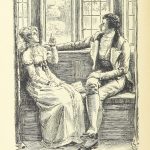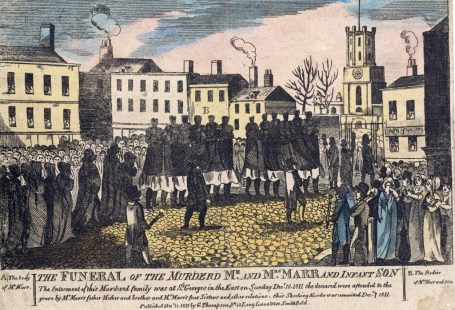This week’s episode of Who Do You Think You Are? featured sports broadcaster Clare Balding. The episode examined the business success and intimate lives of her ancestors. Clare explored both her maternal and paternal lines in an episode which brought her into the circles of high society in both England and America.
Famous names appeared from almost every document consulted as Clare examined her maternal line. This line sees Clare connected to the Earls of Derby, a lineage which stretches back to the medieval period. Clare’s particular interest was in her great-grandmother, Lady Victoria Stanley and great-grandfather, Sir Malcolm Bullock. These are families whose lives are well documented in newspapers.
Register now and view 3 pages for FREE
Victoria and Malcolm met in France and had a relatively short but happy marriage. Their marriage ended with the tragic death of Lady Victoria in a hunting accident in November 1927, a story which ‘made every newspaper of the day’. Clare wondered how large a horse Lady Stanley might have been riding on the day of the accident. In newspaper reports we were able to confirm that Victoria’s brother noted that her horse was 17 Hands High. Horses are measured at their ‘withers’, this is the highest point of horses back just before the mane starts. A horse measuring 17 Hands High is 1.7m at this point. According to the Horse Channel this is a big horse. Many shire horses are 17 HH and it is, according to the site, the tallest height for a thoroughbred horse.

Lord Stanley, her brother, described how he found Lady Bullock’s horse running loose and his sister lying unconscious near a very low iron girder railway arch. Her horse was 17 hands high, and in his opinion his sister struck her head against the arch when riding under it.

Her father was much affected by the loss. One paper wrote some two years later:
Lord Derby’s increasing withdrawal from public life has been due to no political differences, but dates from the tragic death of his idolised daughter, Lady Victoria Stanley

Clare also explored the life of Sir Malcolm Bullock’s life after his wife’s death. In the 1930s he moved in artistic circles and is rumoured to have had a love affair with artist Rex Whistler. The two travelled to Paris together in 1931 to view, what was described by The Illustrated London News, as ‘The first complete exhibition of Byzantine Art‘. The exhibition, which was held in the Pavillion de Marsan wing of the Louvre, featured works from the fourth to the thirteenth centuries.

Next, Clare’s paternal line brought her to New York. Knowing her Grandfather, Gerald Balding, a champion polo player had married into a wealthy New York family Clare set off to discover how they had made their fortune. The history of polo is well covered in our papers, with many papers running regular ‘Polo Notes‘. Clare’s grandfather met his future wife Eleanor Hoagland when he was playing for the Rumson Polo Club.

 The big surprise came when Clare discovered that her grandmother’s family fortune came from Baking Powder! The Hoaglands were not the first to develop the substance, but were hugely successful in marketing their Royal Baking Powder worldwide. The first mention of baking powder that we could discover in the newspapers was for Matthew’s Baking Powder in 1846. They were not the first to develop the product either, that accolade goes to a Mr Bird who you might be familiar with from his powered custard.
The big surprise came when Clare discovered that her grandmother’s family fortune came from Baking Powder! The Hoaglands were not the first to develop the substance, but were hugely successful in marketing their Royal Baking Powder worldwide. The first mention of baking powder that we could discover in the newspapers was for Matthew’s Baking Powder in 1846. They were not the first to develop the product either, that accolade goes to a Mr Bird who you might be familiar with from his powered custard.

Baking powder was a convenient substitute for yeast (barm) in breads and cakes.In the post-war years baking powder was advertised as the solution to improving baking with the dense flour.
To discover more about the history of baking & cooking read our blogs.
Our newspapers are ideal for discovering more about the stories featured on Who Do You Think You Are?. We blog after every episode and get ‘behind the scenes’ of the stories that feature, fleshing out the details and showing you how you can use the Archive to tell similar stories about your family.





